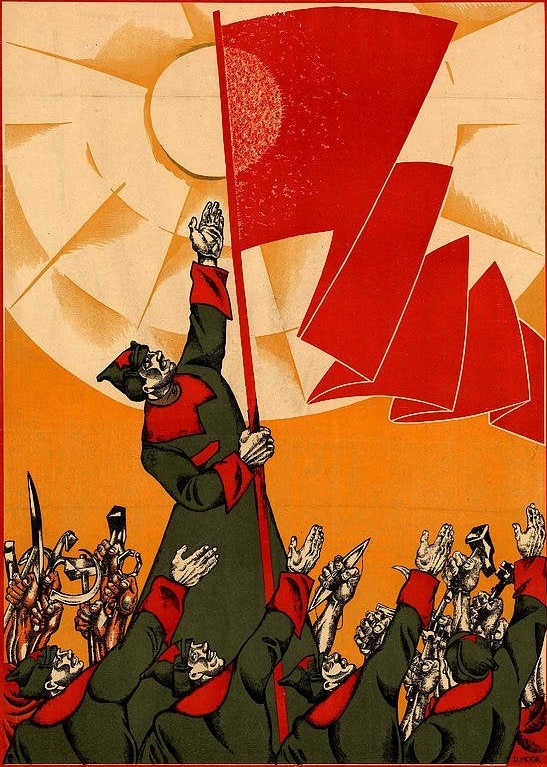- cross-posted to:
- history@hexbear.net
- sovietposters
- cross-posted to:
- history@hexbear.net
- sovietposters
Quoting Michael Parenti’s Blackshirts and Reds, pgs. 9–10:
Nazi officials and SS commanders amassed personal fortunes by plundering conquered territories and stealing from concentration camp inmates and other political victims. Huge amounts were made from secretly owned, well‐connected businesses, and from contracting out camp slave labor to industrial firms like I.G. Farben and Krupp.
Hitler is usually portrayed as an ideological fanatic, uninterested in crass material things. In fact, he accumulated an immense fortune, much of it in questionable ways. He expropriated art works from the public domain. He stole enormous sums from Nazi party coffers. He invented a new concept, the “personality right,” that enabled him to charge a small fee for every postage stamp with his picture on it, a venture that made him hundreds of millions of marks.⁷
The greatest source of Hitler’s wealth was a secret slush fund to which leading German industrialists regularly donated. Hitler “knew that as long as German industry was making money, his private money sources would be inexhaustible. Thus, he’d see to it that German industry was never better off than under his rule—by launching, for one thing, gigantic armament projects,”⁸ or what we today would call fat defense contracts.
Far from being the ascetic, Hitler lived self‐indulgently. During his entire tenure in office he got special rulings from the German tax office that allowed him to avoid paying income or property taxes. He had a motor pool of limousines, private apartments, country homes, a vast staff of servants, and a majestic estate in the Alps. His happiest times were spent entertaining European royalty, including the Duke and Duchess of Windsor, who numbered among his enthusiastic admirers.
(Emphasis added.)
The big question though is what happened to the fortune after the war.
Yes. For anyone interested there is also the classic Richard Grunberger “Social history of the Third Reich”, which is most probably one of the main sources used by Parenti in this part.



